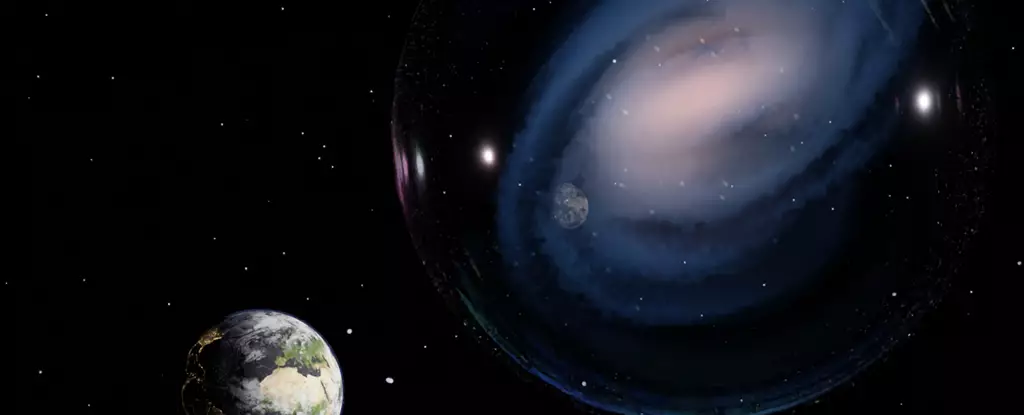In the vast expanse of the Universe, there exists a galaxy that holds an uncanny resemblance to our own Milky Way. Dubbed ceers-2112, this enigmatic formation has left astronomers puzzled and intrigued. Recently, an international team of researchers made the serendipitous discovery of ceers-2112 while analyzing images captured by the James Webb Space Telescope’s Near Infrared Camera. Initially, the images presented a hazy blob, but upon further investigation using a range of wavelengths and aided by the Hubble Telescope, the ancient system unveiled its true nature – a complex, barred spiral structure reminiscent of our own galaxy, albeit on a smaller scale.
Galaxies manifest in various shapes, sizes, and luminosities, each revealing a unique evolutionary journey. Some galaxies are massive and amorphous, while others are small and irregular. And then there are those, like our Milky Way, which twirl and twist, boasting stars and gas concentrated in radiant lines, resembling cosmic ribbons swirling through space. While multiple factors contribute to a galaxy’s shape, such as collisions and interactions with neighboring galaxies, the prevailing belief has been that complex shapes take time to develop. Barred spiral galaxies, in particular, were thought not to exist earlier than approximately 8 billion years after the Big Bang. However, the stretched light emitted by ceers-2112 challenges this assumption, indicating that it already possessed a sophisticated structure a mere 2 billion years after the birth of the Universe.
To comprehend the formation of galaxies, we must consider their origin as vast accumulations of dust and gas that bind together through gravity. While gravity arising from the debris plays a role, dark matter is believed to contribute significantly to the overall gravitational force. As materials congregate in specific regions, nuclear fusion ignites, giving rise to stars and the subsequent birth of planets. Simultaneously, the combined momentum of swirling dust and racing stars sets the infant galaxy into motion. The intricate interplay of forces – angular momentum, gravitational attraction, and the inertia of falling masses – may eventually flatten the initially amorphous galaxy into a disc-like shape. Irregular paths of certain stars due to gravitational influence can gradually amplify, resulting in distinct patterns known as bars. Furthermore, the presence of bars or nearby galaxies can shape the distribution of objects within a galaxy, creating grand spirals as the galaxy rotates. Conventionally, the molding of a galaxy necessitates sustained forces working over extended periods. However, the presence of ceers-2112 implies a reassessment of the factors transforming a shapeless blob into a breathtaking cosmic whirlpool.
Previously, it was believed that during the Universe’s infancy, galaxies were turbulent and unstable, rendering the formation and endurance of bars unlikely. However, the discovery of ceers-2112 challenges this notion and joins a growing list of unexpected revelations about the early Universe. From galaxies that burn too brightly to precocious black holes that grow at a perplexing pace, our understanding of cosmic evolution is constantly evolving. With the James Webb Space Telescope continuing to capture mesmerizing images of the cosmos in its nascent stages, we shall undoubtedly uncover the secrets behind the birth and evolution of galaxies like ceers-2112, shedding light not only on their existence but also on the remarkable beauty of our very own Milky Way.



Leave a Reply